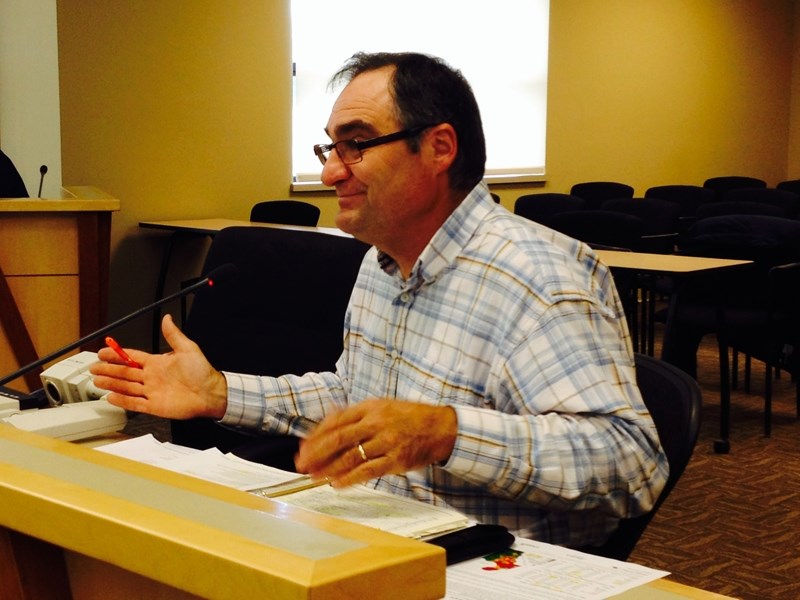Cattle and hog producers in West Central Alberta will need to take a wait-and-see attitude towards another ruling against U.S. country of labeling regulations (COOL), the Mountain View County agricultural service board heard Oct. 20.
Speaking at the board's regularly scheduled meeting, Grant Lastiwka, livestock and forage business specialist with Alberta Agricultural and Rural Development in Olds, said the ruling is good news, but will probably be appealed by the U.S.
“It again shows the support for Canada in this negotiation,” said Lastiwka. “Yet because of the ability (of the U.S.) to go back and ask for another review, one more time, I think many of us feel that we are just waiting.
“It's another wait and see for another appeal. This is the second time so we don't want to get excited too fast.”
On Oct. 20 the World Trade Organization compliance panel said that COOL regulations in the U.S. are unfairly penalizing producers who send cattle and hogs to the U.S. market.
In light of the ruling, the Canadian Cattlemen's Association has renewed calls on the U.S. Congress to repeal the COOL regulations or at least revise the legislation to eliminate the need for U.S. cattle buyers to segregate imported from U.S.-born livestock.
“The compliance panel report leaves no shadow of a doubt that the U.S. COOL legislation is causing discrimination against live imports of cattle and hogs in the U.S. marketplace,” said association president Dave Solverson.
The segregation rule is having a negative impact on beef producers in this region, as well as elsewhere in Canada, said Lastiwka.
“The fact that the meat supply is given a label does in fact affect the consumers buying it,” he said. “The fact that the meat is designated differently (affects) how the plants handle it themselves. They have to keep it very separate within their systems.
“Because of all the rules around separating the meat supply, it has an effect on those in the U.S. marketplace who do choose to kill the Canadian cattle. That means there are less buyers because only a few plants buy Canadian cattle.”
Alberta premier Jim Prentice released the following statement about the COOL ruling: “Time and time again the WTO has clearly supported Alberta and Canada's position that the U.S. government is failing to meet its trade obligations because of the excessive labelling, tracking and segregation requirements placed on Canadian beef and pork imports. It's time for the American government to do what is right and put an end to this blatantly discriminatory trade barrier.”
Meanwhile, also during the Oct. 20 board meeting Laskiwka said the crop quality in the region is not up to last year's standard.
“With the weather that we've had – it's certainly been a very wet year and then some of the crops that were put to the ground with the snow and the hail damage that went through some of the areas – we've got an array of crops that have varying growth stages in them,” he said.
“We've got more green in canola than we would like in spots, so there's been salvage crops. The quality in general is down in the crops.”
Most of the harvesting is now completed in the region, he said.
“The majority of the producers have got the crops off. I'd say we are sitting with maybe five per cent or less who haven't got their crops off,” he said.
Lastiwka also discussed the rail transportation situation as it relates to the movement of grain in the district.
“The railway situation is such that the pressure is still being maintained by the federal government and the Alberta government has been working with them. It is still a concern,” he said.
Last year's movement of the grain crop to the West Coast faced long delays because of rail transportation bottlenecks.
The agriculture industry is facing increased competition from other industries such as petroleum, forestry and mining for rail capacity, he said.
“There is a demand and a challenge to meet that supply if we have another cold winter, which means shorter railway trains and slower times as well. People are hoping for a warm winter after last year, and in particular some of that has to do with feed inventories,” he said.
The agricultural service board advises the county on agriculture-related issues and concerns.



